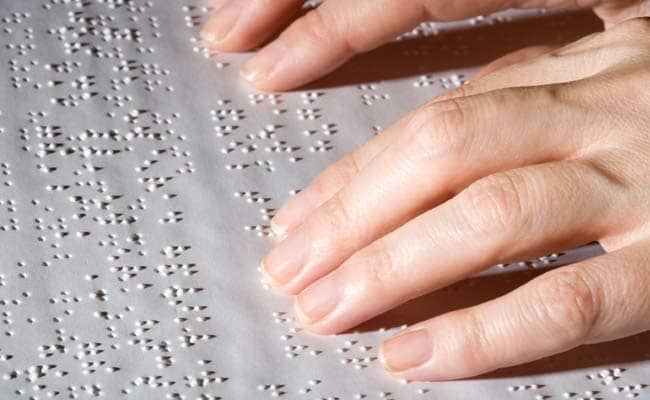Braille Facts
What is Braille?
Braille is a tactile reading and writing system used by blind and visually impaired people who cannot access print materials. It uses raised dots to represent the letters of the print alphabet. It also includes symbols to represent punctuation, mathematics and scientific characters, music, computer notation and foreign languages.
Why is Braille used?
Braille is not a language. It is a code by which all languages may be written and read. Through the use of braille, people who are blind are able to review and study the written word. It provides a vehicle for literacy and gives an individual the ability to become familiar with spelling, punctuation, paragraphing and other formatting considerations.
Who uses Braille?
Braille is used mainly by people who are blind or deafblind. It is critically important to the lives of visually impaired people as the ability to read and write in braille opens the door to literacy, intellectual freedom, equal opportunity, and personal security. Teachers, parents and others who are not visually impaired tend to read Braille by sight rather than by touch.
What does Braille look like?
Braille symbols are formed within units of space known as braille cells. A full braille cell consists of six raised dots arranged in two parallel vertical columns of three dots (like the number 6 on a dice). The dot positions are identified by numbers one through to six. 63 combinations are possible using one or more of these six dots. Cells can be used to represent a letter of the alphabet, number, punctuation, part of a word or even a whole word.
How was Braille invented?
A wide variety of methods were tried to enable blind people to read and write independently. Most were methods using raised print letters. The prevailing belief for why the braille system invented by Louis Braille was successful, when other methods failed, was because braille was based on a relational method of dots, specifically designed to be identified with the fingertip, rather than being based on symbols devised for visual recognition. The other advantage was that braille could be written by blind people completely independently.
The braille code has undergone continuous modification over the years, particularly through the addition of contractions for words which appear frequently in English. The use of contractions allows for faster braille reading and helps to reduce the size of braille books. Since its development in France by Louis Braille in the early 19th Century, braille has become an effective means of communication and a proven avenue for achieving and enhancing literacy for people who are blind or visually impaired.
How is Braille written?
When every letter of every word is expressed in braille, it is referred to as uncontracted braille. Many newly blinded adults find uncontracted braille useful for labelling personal or kitchen items. Books or other reading materials can also be transcribed in uncontracted braille.
The system often used for reproducing textbooks and publications in English is known as contracted braille. In this system, cells are used individually or in combination with others to form a variety of contractions or whole words. For example, in uncontracted braille the phrase "you like him" requires twelve cell spaces. If it were written in contracted braille, this same phrase would use only six cell spaces. The letters Y and L are also used for the whole words "you" and "like" respectively. Similarly, the word "him" is formed by combining the letters h and m.
There are 180 different letter contractions and 75 short form words used in English contracted braille. These short cuts reduce the volume of paper needed for reproducing books in braille and make reading faster.
Just as printed materials can be produced with paper, pencil, typewriter or printer, braille can also be written in several ways. Embossed Braille is usually produced using a Perkins Brailler. Unlike a typewriter which has more than 50 keys, the Perkins Brailler has only six keys and a space bar. These keys are numbered to correspond with the six dots of a braille cell. Since most braille cells contain more than a single dot, all or any of the brailler keys can be pushed at the same time.
Computers provide and continue to expand additional avenues of literacy for braille users. Software programs and portable electronic braille note takers allow users to save and edit their writing, have it displayed back to them either audibly or tactually and produce a hard copy via a desktop computer-driven braille embosser.


